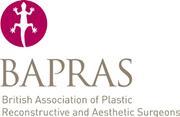BOASt - Management of musculoskeletal soft tissue infections
Life-threatening conditions including Necrotising Fasciitis and Myositis; Native large joint infections; Abscesses and cellulitis


Management of musculoskeletal soft tissue infections: Life-threatening conditions including Necrotising Fasciitis and Myositis; Native large joint infections; Abscesses and cellulitis
Background and justification
Severe soft tissue infection requires emergency, multidisciplinary management to prevent mortality or significant morbidity. The treatment of necrotising infection is urgent surgical intervention.
Inclusions:
Patients with clinical and/or laboratory confirmation of soft tissue infection involving the limbs, pectoral or pelvic girdle, or native joints.
Exclusions:
Fracture-related1 and peri-prosthetic joint2 infection.
Standards for Practice
- Locally agreed multi-specialty pathways are required for all patients presenting with musculoskeletal soft tissue infections.
- Pathways should identify the speciality with primary clinical responsibility.
- A patient presenting with evidence of sepsis must have the “sepsis six”3 protocol initiated immediately.
- If necrotising fasciitis / myositis is suspected:
- Surgery is required urgently and should not be delayed by medical and intensive care management, imaging, or inter-hospital transfer.
- In all cases broad spectrum parenteral antibiotics must be started without delay, under the guidance of a microbiologist and determined by local policy.
- Immediate surgical debridement of necrotising infection should be performed by suitably qualified surgeon(s) (NCEPOD 1).
- Surgery must include a documented systematic assessment of skin, subcutaneous fat, fascial planes, neurovascular structures and all muscle groups.
- Multiple deep tissue samples should be taken for microscopy and culture and labelled as “necrotising infection” with immediate transfer to the laboratory.
- A decision to amputate should be made by at least two consultants*. Primary closure should not be performed at the index operation.
- All patients with a necrotising infection should be undergo review by the treating team within 6 hours of diagnosis or surgery.
- Failure to improve after surgical debridement implies incomplete resection of infected tissue and should mandate further surgical exploration.
- If a patient with major necrotising infection is considered unfit for surgery, the reasons should be clearly documented, and they should be referred for end-of-life care.
- Native joint infections should be treated according to standards outlined in the BOASt for the acute management of periprosthetic joint infection2, recognising the time critical nature of chondral injury. Aspirate should include samples for crystallography.
- Cellulitis of the limbs should be managed by a single medical or surgical specialty following a locally agreed pathway, irrespective of proximity to a joint.
- Simple abscesses in systemically well patients can be considered for incision and drainage under local anaesthesia or sedation, with or without image guidance, in a suitable clean environment.
- Deep/complex abscesses and those in diabetic patients may require formal surgical drainage in an operating theatre.
1 www.boa.ac.uk/resource/boast-fracture-related-infections.html
2 www.boa.ac.uk/resource/boast-acute-management-of-peri-prosthetic-joint-infection.html
3 https://cks.nice.org.uk/topics/sepsis/management/management/
* Two consultants from different specialties including (but not limited to) Intensive Care, Anaesthesia, Orthopaedics, Plastic Surgery
Advisory notes / technical tips regarding the surgical management of necrotizing infections:
- The aim of surgery is to:
- Confirm the diagnosis and isolate causative organisms
- Define the extent of the disease
- Excise the disease.
- Tissues may be classified according to three zones1:
Zone 1: the area of obvious necrosis, with fixed staining, thrombosed blood vessels or haemorrhagic bullae.
Zone 2: areas of likely infection with warm, red skin, exquisite tenderness, or induration (this may include seemingly normal skin over an area of non-adherent fascia).
Zone 3: normal skin and fascia.
- Debridement should proceed in a logical manner and contain zones 1 & 2 and a 3cm cuff of zone 3 skin and fascia.
- The absence of ‘dishwater fluid’ and a positive ‘sweep test’ does not rule out necrotising infection.
- Ideally 5 samples from all zones should be taken for microbiological culture using separate sterile instruments and a no touch technique.
- Samples from zone 3 should be labelled separately and identified as being from the “healthy zone”.
- Laboratories should be informed of incoming specimens.
1 Wong CH, Yam A, Tan A, Song C. Approach to debridement in necrotising fasciitis. Am J Surg 2008. 196(3): 19-24.
